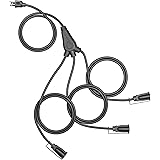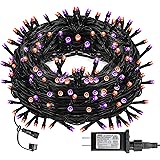Do you ever feel overwhelmed by the sheer number of tools available for home improvement, unsure of where to even begin your DIY journey? Many aspiring do-it-yourselfers stand in hardware stores, facing rows of intimidating equipment, longing for a straightforward path. However, embarking on your first home projects doesn’t require a workshop full of expensive, heavy-duty power tools. As Kristen demonstrates in the insightful video above, you can achieve remarkable results with a select few beginner DIY tools that are both affordable and simple to master.
This comprehensive guide complements Kristen’s expert advice, diving deeper into why these essential tools are perfect for new DIYers. We will explore practical applications, offer additional tips for usage, and help you confidently build your fundamental toolkit. Preparing for common tasks like hanging artwork, installing decorative molding, or refreshing a room with paint becomes much simpler with the right home improvement essentials at your fingertips.
Mastering Cuts Without a Power Saw: Miter Box and Handsaw
When considering precise wood cuts for your DIY projects, many novices immediately think of a large, complex power miter saw. Conversely, Kristen wisely points out that a humble miter box and handsaw set provides an excellent, budget-friendly alternative. This basic setup, often available for around $10, allows you to make accurate angled cuts without the noise, power requirements, or intimidation associated with electric saws.
The miter box features pre-cut slots that guide your handsaw, ensuring precise angles like 90 degrees for straight cuts, 45 degrees for perfect corners, and even 22.5 degrees for octagonal shapes. This functionality is invaluable for installing picture frame molding, baseboards, or window trim. While it requires more physical effort than a power saw, the controlled, deliberate motion helps build confidence and accuracy. Always prioritize safety by securing your workpiece firmly and wearing appropriate protective gear, such as gloves and safety glasses. This manual approach is ideal for thinner pieces of wood or decorative molding, allowing you to achieve professional-looking finishes on your home improvement essentials without a significant investment.
Quick and Easy Trim: The Power of Miter Shears
While a miter box is superb for many trim jobs, sometimes you need an even quicker solution for lightweight materials. Miter shears are like oversized, heavy-duty scissors, specifically designed for cutting thin, decorative trim and small pieces of molding. These handheld tools offer incredible convenience, allowing you to make precise corner cuts on lightweight plastic, vinyl, or small wood trims with minimal effort. They completely eliminate the need for pulling out clunky equipment, making them an indispensable addition to your collection of beginner DIY tools.
Miter shears come equipped with an adjustable protractor, letting you pivot the marker to your desired angle, most commonly 45 degrees for seamless picture frame corners. Simply place your trim, align the guide, and squeeze the handles for a clean, swift cut. Kristen highlights using these for picture frame molding and adding small trim pieces to cabinets. On the other hand, remember their limitation: these shears are best suited for slender materials. Attempting to cut thick wood or dense materials with them will likely yield poor results and could damage the tool. Their ease of use and speed make them perfect for detailed work, significantly streamlining small finishing touches around your home.
Painting Made Easy
Tackling a room painting project can seem daunting, especially when faced with high ceilings or low baseboards. However, the right painting tools can transform this task from a laborious chore into an efficient and even enjoyable experience. Kristen emphasizes two non-negotiable items for any painting endeavor: the extendable roller stick and painter’s tape.
Effortless Painting with an Extendable Roller Stick
Imagine painting an entire wall from floor to ceiling without constantly climbing up and down a ladder or bending awkwardly. An extendable roller stick makes this vision a reality. Ranging typically from two feet to four feet, these versatile handles allow you to comfortably reach every part of a wall. You can maintain a consistent rolling motion and pressure across the entire surface, leading to smoother, more even paint coverage. This not only saves your back and knees but also dramatically speeds up the painting process. Selecting an extendable roller with a comfortable grip and a sturdy locking mechanism will enhance your painting experience. Different versions offer varied padding and lengths, so choose one that suits your physical space and preference for these home improvement essentials.
The Versatility of Painter’s Tape: More Than Just Clean Lines
While its primary function is to create crisp, clean paint lines, painter’s tape serves a multitude of purposes in beginner DIY projects. Kristen accurately describes it as an indispensable planning tool. Before committing to permanent installations like wall art, picture frame molding, or shelves, you can use painter’s tape to visualize the layout. It allows for temporary placement, helping you experiment with spacing and alignment. This simple step can prevent countless mistakes and ensure you love the final arrangement.
Moreover, painter’s tape is excellent for marking level lines or establishing even spacing for multiple items. There are various types of painter’s tape available, from delicate surface tapes that won’t damage fresh paint to heavy-duty options for rougher textures. Choosing the right tape for your surface and leaving it on for the appropriate duration are crucial for achieving those coveted clean lines. Its temporary adhesive nature makes it perfect for marking, protecting, and planning, proving its worth far beyond just masking during painting. Indeed, this is one of those simple tools that every household should possess.
Hanging and Mounting Solutions
One of the most common DIY tasks is hanging items on walls, whether it’s artwork, mirrors, or curtains. Fear not, for a few clever tools can make this process incredibly simple, even for those new to home improvement. From no-tool solutions to getting comfortable with your first power tool, Kristen shares invaluable tips for secure and straightforward wall hanging.
Simple Wall Hanging: 3M Drywall Picture Hangers
For quick and secure wall art installation without any tools, 3M drywall picture hangers, particularly the Claw series, are a game-changer. These innovative hangers press directly into drywall, using a unique claw-like mechanism to securely grip the wall. They eliminate the need for stud finding or drilling, making them incredibly user-friendly. Kristen mentions using the 65-pound claws for a full wall mirror and 25-pound claws for smaller pieces, demonstrating their impressive weight capacity.
They even come with small markers to help you plan out exact placement before hanging, ensuring a perfectly level and spaced display. While they offer remarkable strength, always select the hanger with the appropriate weight capacity for your item. On the other hand, understanding that these hangers are specifically designed for drywall means they are not suitable for plaster or masonry walls. These hangers are truly an excellent option for apartment dwellers or anyone hesitant about drilling holes, streamlining the process of decorating your space with minimal effort.
Your First Power Tool: The Essential Cordless Drill
The transition from manual tools to power tools can feel daunting, but a cordless drill is perhaps the most essential and accessible first step. Kristen advises starting with an electric screwdriver to build comfort, as it mimics the feel of a drill but with less power. A cordless drill, however, dramatically expands your DIY capabilities, allowing you to quickly hang shelves, install blinds, assemble furniture, and more.
Choosing a lightweight, compact cordless drill with variable speed settings is ideal for beginners. Practice drilling into scrap wood to get a feel for its power and control before tackling actual projects. Understanding different drill bits—for wood, metal, or masonry—is also crucial for effective use. Remember, a drill is a versatile tool for both making holes and driving screws, significantly reducing manual effort. Overcoming that initial intimidation will unlock a vast array of home improvement projects you can confidently complete. It’s a core piece in any collection of home improvement essentials.
Locating Hidden Support: The Simple Stud Buddy
For hanging anything heavy or needing structural support, such as a mounted TV, curtain rods, or substantial shelving, finding a wall stud is paramount. The Stud Buddy is a brilliant, straightforward tool for this task. Unlike electronic stud finders that can be finicky or require batteries, the Stud Buddy is a simple magnet. It slides across your wall and audibly clicks or sticks when it locates a screw or nail head within a stud. This ingenious design means it automatically adheres to the wall once a stud is found, leaving your hands free to mark the location. Its reliability and ease of use make it a favorite among beginner DIYers.
Its hands-free operation is a distinct advantage, preventing the need to hold it steady while you mark your spot. Kristen praises its strength and simplicity, noting its consistent performance compared to more complex gadgets. This tool is invaluable for ensuring your installations are secure and durable, providing peace of mind for any mounting project. A truly indispensable item for those who want their wall mounts to be structurally sound.
Finishing Touches and Power Upgrades
Once you’ve mastered basic cuts and hanging techniques, you might want to delve into projects that require smoother finishes or more robust assembly. The next set of tools introduces you to accessible power equipment that will elevate the quality and speed of your DIY projects. These are designed with the beginner in mind, prioritizing ease of use and safety.
Smooth Finishes: The Beginner-Friendly Orbital Sander
Sanding by hand, especially for larger surfaces, is an incredibly time-consuming and labor-intensive task. Kristen vividly recounts spending days or weeks on hand-sanding projects, contrasting it sharply with the efficiency of an orbital sander. This power tool makes sanding much quicker and less strenuous, allowing you to achieve perfectly smooth surfaces in a fraction of the time. Many modern orbital sanders are cordless and lightweight, making them very easy to handle. Operating one involves simply holding it on top, pressing the start button, and letting the tool do the work.
The orbital motion helps prevent swirl marks, providing a smooth, uniform finish. Its base typically features a hook-and-loop (Velcro) system, allowing for quick changes of sanding discs with different grits. Higher grit numbers (e.g., 220) produce a finer, smoother finish, while lower numbers (e.g., 80) are for more aggressive material removal. Always start with a coarser grit to remove imperfections and progressively move to finer grits for a silky smooth feel. This tool is truly one of the most simple power tools to use, making it an excellent addition to your beginner DIY tools.
Sealing and Securing: The Indispensable Caulking Gun
For flawless finishes and secure installations, a caulking gun is a must-have tool for any DIY enthusiast. This simple device holds tubes of caulk, sealant, or liquid nails, providing a controlled and consistent application. Kristen notes its versatility for filling gaps around trim, bathtubs, windows, or even exterior home surfaces. A smooth caulk bead creates a seamless, professional look, hiding imperfections and preventing moisture intrusion.
Using a caulking gun is straightforward: insert a tube, puncture the inner seal, and apply even pressure to the trigger. Achieving a neat bead might take a little practice, but watching a few tutorials can quickly guide you. For adhesive applications, like installing a backsplash or securing loose items, the caulking gun ensures an even distribution of liquid nails. Its role in both aesthetic finishing and practical sealing makes it an essential item in any home improvement toolkit, delivering professional results with ease.
Professional Trim Work: The Cordless Brad Nailer
Stepping up your trim game from hammer and nails to a cordless brad nailer offers a significant leap in efficiency and precision. Kristen describes this tool as surprisingly easy to use despite its somewhat intimidating appearance. A cordless brad nailer is handheld, lightweight, and comes with essential safety features, making it a perfect power tool for beginners. It is invaluable for installing baseboards, crown molding, door and window trim, or any decorative finish work where small, discreet nails are preferred.
Loading brad nails is quick and simple, with various nail sizes available for different project requirements. Kristen suggests practicing on a hidden wall or scrap wood to get comfortable with the feel and power of the tool. This practice builds confidence and helps you understand how to achieve flush, secure fastenings. The speed and ease with which a brad nailer secures trim pieces dramatically improve the quality and finish of your home improvement projects. It’s an investment that pays dividends in polished, professional-looking results for all your trim work, solidifying its place among crucial beginner DIY tools.
Your Ready-to-Go Toolkit: The Essential Tool Bag
Finally, to round out your collection of beginner DIY tools, Kristen recommends investing in a comprehensive tool bag. This isn’t just about individual items but having a grab-and-go solution for various small tasks. A well-stocked tool bag ensures you’re prepared for unexpected repairs or spontaneous projects without hunting for scattered implements. Many pre-assembled kits are available, often containing a fantastic selection of basic hand tools.
These kits typically include a hammer for driving nails, a measuring tape for accurate dimensions, various screwdriver sizes (Phillips and flathead) for tightening screws, a wrench for bolts, and an X-Acto knife for precise cutting. Having all these home improvement essentials neatly organized in one portable bag saves time and frustration. It means you are always ready to tackle a wide range of household fixes and creative endeavors, empowering you to approach any DIY challenge with confidence and convenience. This collection of simple tools truly makes a difference.










